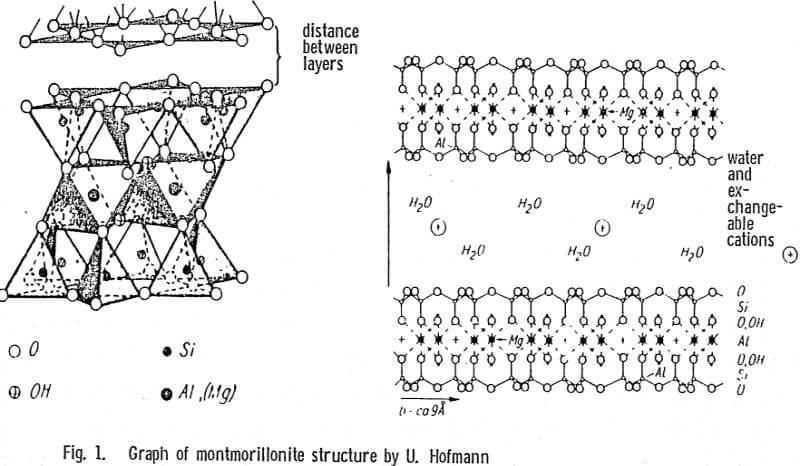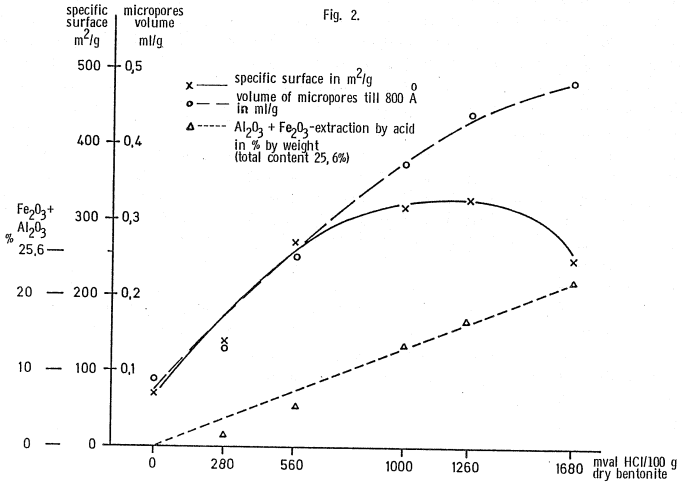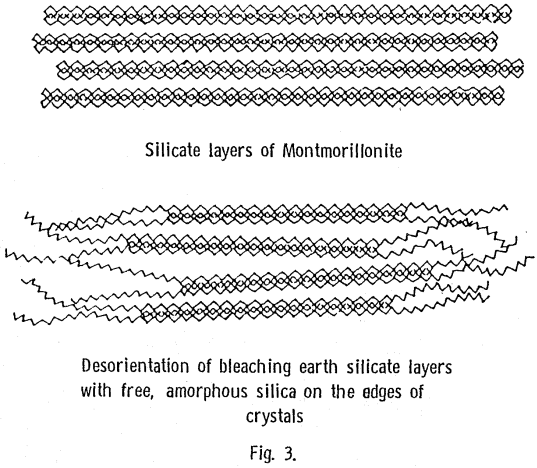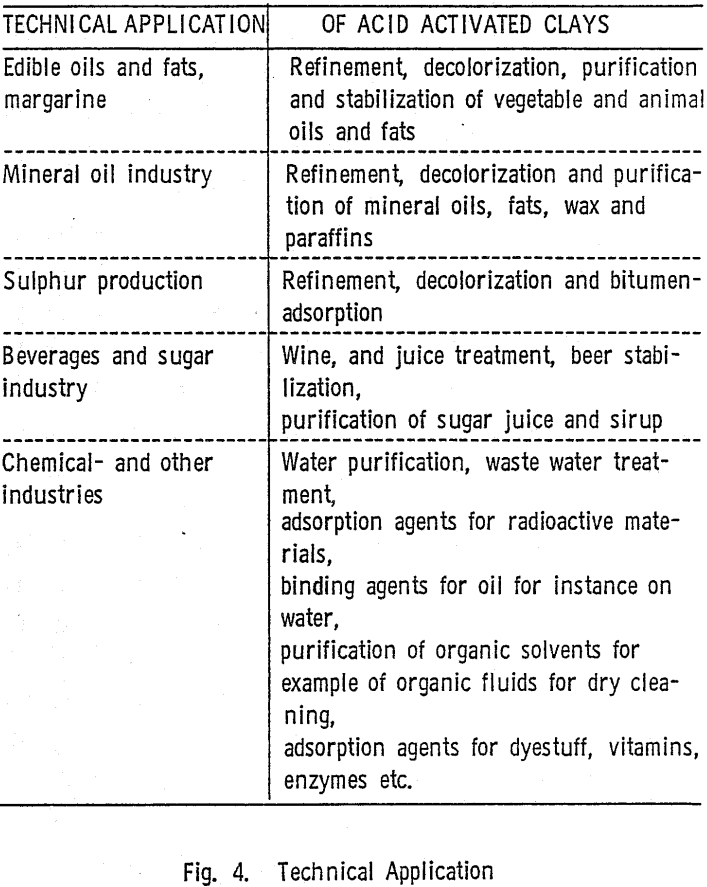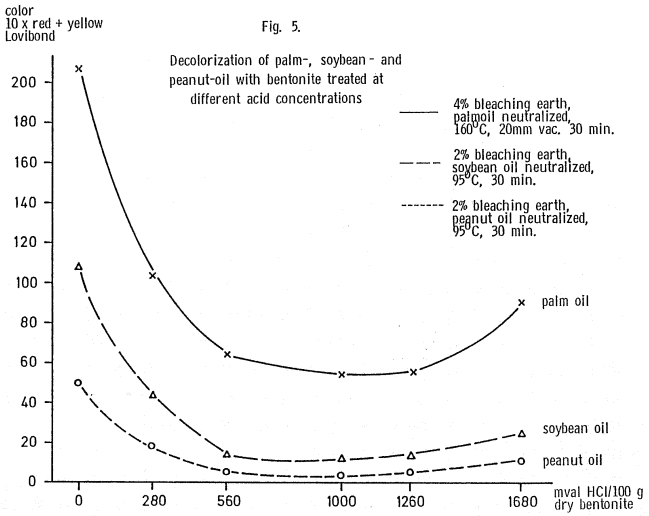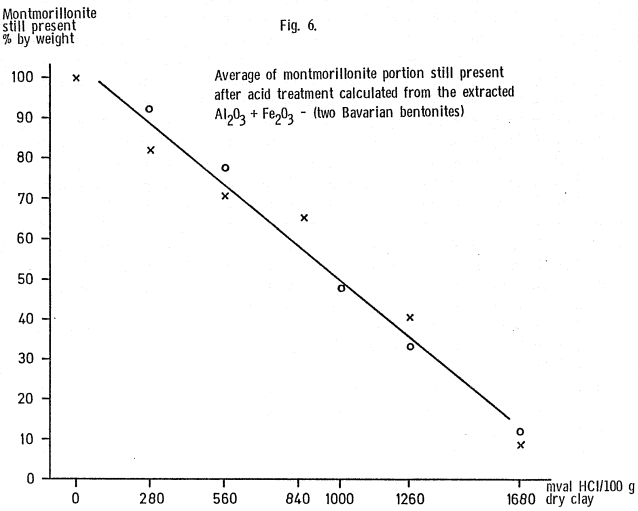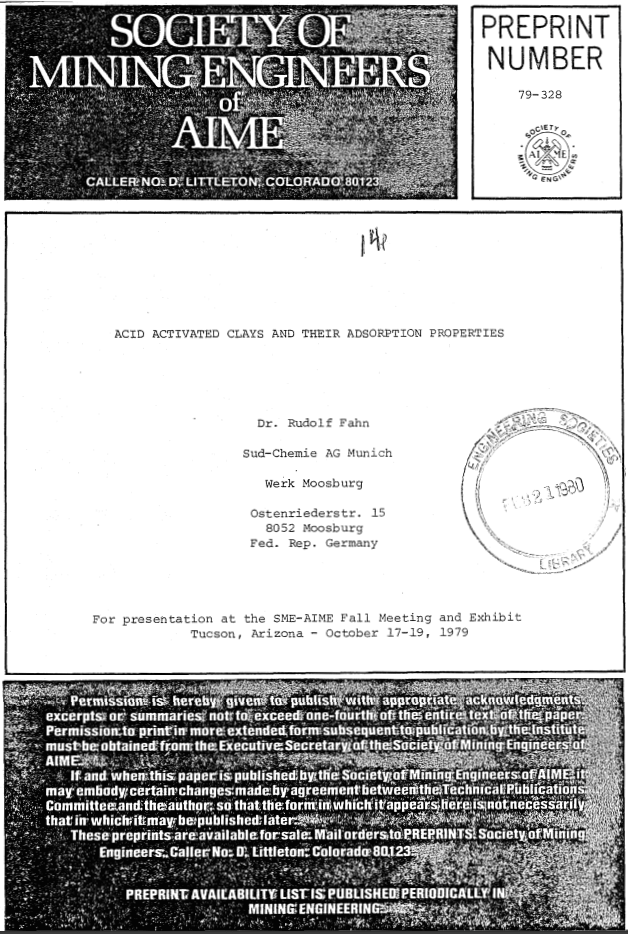Acid Treatment of Bentonite: Under the influence of a mineral acid the exchangeable alkaline earth ions of bentonite are substituted by hydrogen ions. Moreover, depending on the acid concentration, temperature, pressure and reaction time, a more or less pronounced leaching process takes place. Thereby Al-, Fe- and Mg-ions are extracted from the octahedron layers. This results in a change in the crystalline structure of montmorillonite and in an increase of its specific surface area and porosity, as shown in Figure 2.
Clay Adsorption Mechanism
In order to gather more experience concerning the possible mechanism in the adsorptive purification of oils, experiments have been made to determine to which extent the free, amorphous silica resulting from acid activation and the intact residual montmorillonite portion influence the adsorption.
For this purpose raw linseed and palm-oils and neutralized soybean and peanut oils were bleached with 0.5 % (peanut oil with 0.25 %) of the high active bleaching earth Tonsil Optimum FF. After filtration the used bleaching earth covered with the contaminations from the oil was secured and the oils still adhering to the filtercake were removed by a 24 hours n-hexane extraction.
On one portion of the freed-of-oil filtercake the following was determined:
- the specific surface by nitrogen adsorption
- the micropore volume by capillary condensation of carbon tetrachloride
- the carbon content.
A second portion of the free-of-oil filtercake was treated with a hot 2 % sodium carbonate solution to extract the free, amorphous silica. The same examinations were conducted at the residual montmorillonite portion. The results of the tests are summarized in Table 1.
The adsorption process at oil bleaching considerably reduces the micropore volume and the specific surface of the bleaching earth. The active spots of the bleaching earth are covered with organic impurities from the oil, what becomes evident from the more or less high carbon content in the oil free bleaching earth filtercake.
In view of the above it can be concluded that sorptive clays produced from bentonites by acid activation develop different adsorption capacities depending on the acid concentration. This is caused by a more or less strong acid attack primarily leaching out Al- and Fe-ions from the octahedron montmorillonite layers. The free, amorphous silicic acid formed at the leaching process develops strong adsorptive and selective capacities, as shown on the example of edible oil bleaching. Adsorption also takes place on the residual montmorillonite portion in the bleaching earth.
Further examinations will be conducted to determine the kinds of compounds in the oils which are preferably adsorptively bonded on the SiO2 and the montmorillonite portion respectively.
